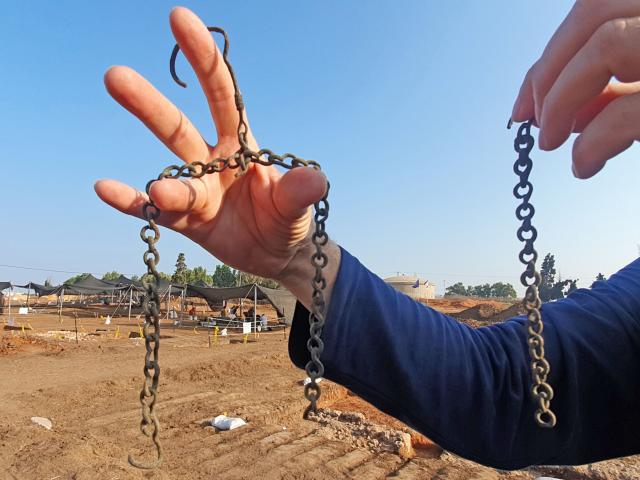
Israeli Archaeologists Uncover Byzantine-Era Coin Depicting Jesus’ Crucifixion
JERUSALEM, Israel – Israeli archaeologists digging in a city near Tel Aviv have uncovered rare artifacts that give a picture of what life was like 1,500 years ago during the Byzantine period.
The Israel Antiquities Authority (IAA) came across the finds while excavating in the Ramat Ha-Sharon region.

The archeological excavation in Ramat Hasharon. Photo : Yoli Schwartz, Israel Antiquities Authority
“The excavation unearthed evidence of agricultural-industrial activity at the site during the Byzantine period – about 1,500 years ago. Among other finds, we discovered a large winepress paved with a mosaic as well as plastered installations and the foundations of a large structure that may have been used as a warehouse or even a farmstead,” explains Dr. Yoav Arbel, Director of the excavation on behalf of the Israel Antiquities Authority.
“Inside the buildings and installations, we found many fragments of storage jars and cooking pots that were evidently used by laborers working in the fields here. We also recovered stone mortars and millstones that were used to grind wheat and barley and probably also to crush herbs and medicinal plants,” Dr. Arbel added. “Most of the stone implements are made of basalt from the Golan Heights and Galilee.”
They also found evidence of Christianity’s influence in the region at that time. They uncovered a rare gold coin that was minted in 638 or 639 AD by the Byzantine emperor Heraclius. The emperor is depicted on one side of the coin, while an image of Golgotha is on the other. The coin contains an inscription in Greek and possibly also Arabic. The inscription is probably the name of the owner who considered it highly valuable.

The gold coin unearthed in the excavation. Photo: Amir Gorzalczany, Israel Antiquities Authority
Another rare find is a bronze chain that was used to suspend a chandelier containing glass lamp holders. These types of chandeliers were typically used in churches at that time.

A bronze chain that was used to suspend a chandelier. Photo : Yoli Schwartz, Israel Antiquities Authority
The site also contained evidence of the Muslim conquest in the seventh century, including a glass-making workshop and a warehouse where four massive jars were found. The jars were likely used to store grain.
“In this period, people were not only working at the site but also living there, because we discovered the remains of houses and two large baking ovens,”said Arbel.
The mayor of Ramat Ha-Sharon said he is “thrilled” by the finds and wants the site to be incorporated in the construction of a new neighborhood on the outskirts of Tel Aviv.




